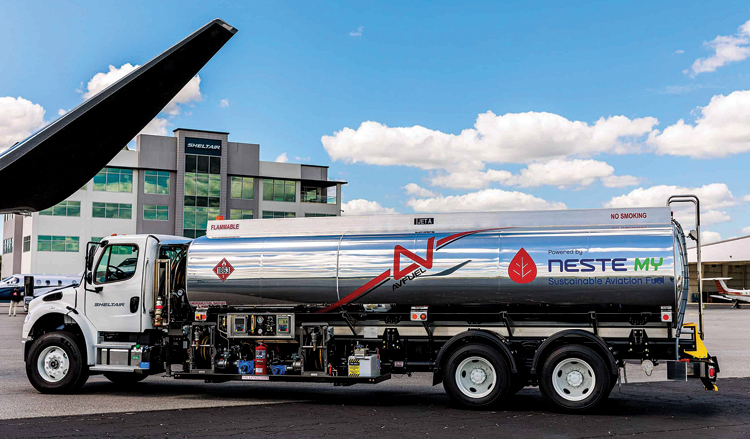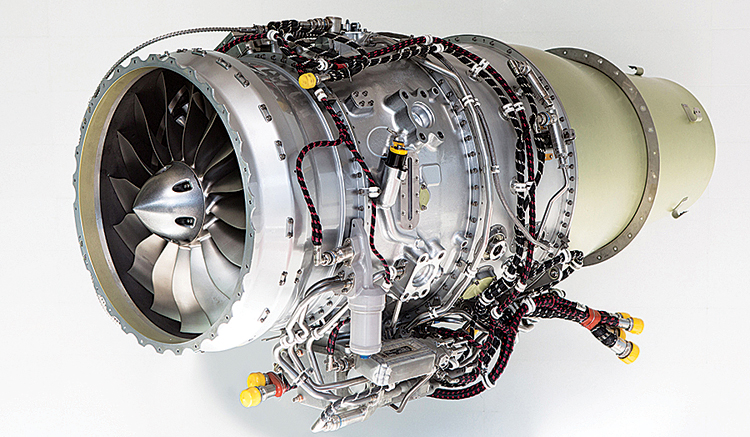INDIAN ARMED FORCES CHIEFS ON OUR RELENTLESS AND FOCUSED PUBLISHING EFFORTS

The insightful articles, inspiring narrations and analytical perspectives presented by the Editorial Team, establish an alluring connect with the reader. My compliments and best wishes to SP Guide Publications.

"Over the past 60 years, the growth of SP Guide Publications has mirrored the rising stature of Indian Navy. Its well-researched and informative magazines on Defence and Aerospace sector have served to shape an educated opinion of our military personnel, policy makers and the public alike. I wish SP's Publication team continued success, fair winds and following seas in all future endeavour!"

Since, its inception in 1964, SP Guide Publications has consistently demonstrated commitment to high-quality journalism in the aerospace and defence sectors, earning a well-deserved reputation as Asia's largest media house in this domain. I wish SP Guide Publications continued success in its pursuit of excellence.
- A leap in Indian aviation: Prime Minister Modi inaugurates Safran's Global MRO Hub in Hyderabad, Calls It a Milestone
- All about HAMMER Smart Precision Guided Weapon in India — “BEL-Safran Collaboration”
- India, Germany deepen defence ties as High Defence Committee charts ambitious plan
- True strategic autonomy will come only when our code is as indigenous as our hardware: Rajnath Singh
- EXCLUSIVE: Manish Kumar Jha speaks with Air Marshal Ashutosh Dixit, Chief of Integrated Defence Staff (CISC) at Headquarters, Integrated Defence Staff (IDS)
- Experts Speak: G20 Summit: A Sign of Global Fracture
Sustainable, Innovative Steps for BizAv’s Path Ahead
With the focus on environmental sustainability, innovation towards technical advancements, NBAA-BACE 22 paved the way for the global business aviation map

Environmental sustainability was on display at 2022 NBAA-BACE, with exhibits and education sessions about evolving technology, Sustainable Aviation Fuel (SAF) and other solutions. Business aviation’s commitment to emissions reduction was evident throughout the show, from the availability of SAF to the two-day Sustainability Summit, which put the focus on industry decarbonisation efforts inside the convention center.
NBAA President and CEO Ed Bolen announced business aircraft operators that have recently received accreditation under NBAA’s Sustainable Flight Department Accreditation Program: Netflix, Mente, Steelcase, Cessna/Beechcraft and Monarch Air Group. The new programme aims to promote a sustainability culture in the business aviation community. Many companies already achieved initial successes by building energy-saving efficiencies within existing infrastructure, and integrating SAF into emerging turbine engine products. Many OEMs, including Bombardier, are using book-andclaim systems to reduce their carbon footprint. In a book-and-claim system, customers buy SAF to fuel aircraft owned by other operators.
The National Airspace System will soon be joined by advanced air mobility vehicles and unmanned aircraft systems
The discussions explored what strategies – including regulation and prizes for developing technological breakthroughs – would effectively incentivise the industry to push forward. Although aircraft powered by hydrogen fuel cells and electric batteries are being developed, much of the success of these new platforms hinges on public perception and safety assurance to them. The discussions identified several areas that need to be focused on to achieve the 2050 deadline, including education, communication and collaboration with regulators and other OEMs.
OEM leaders discussed achievements, goals and challenges as civil aviation begins to map out plans on how the industry will achieve net-zero carbon emissions by 2050. Earlier in October, the International Civil Aviation Organisation (ICAO) announced its commitment for global civil aviation operations to achieve net zero carbon emissions by 2050. NBAA made its own 2050 net-zero emissions pledge last year.
The discussions at NBAA-BACE came on the heels of exciting developments:
- Congress’ continued interest in reducing greenhouse gas emissions and incentivising sustainability in aviation, having recently included a blenders tax credit in the 2022 Inflation Reduction Act to incentivise greater production of sustainable aviation fuel (SAF). This follows recent policy action at the EU level and in the UK.
- Flights powered by SAF are on the rise and calls for investments in the production and use of SAF have become more popular.
- The business aviation community continues to decrease carbon emissions through new technologies; SAF production, availability and use is growing across the sector; and milestones with electric and other alternative propulsion systems are being achieved regularly.
- On the eve of NBAA-BACE 2022, Avfuel provided Sheltair Aviation’s FBO at Orlando Executive Airport (KORL) with two truckloads—16,000 gallons—of blended sustainable aviation fuel (SAF). Neste produced the fuel, which is a 30 per cent SAF blend. It will reduce lifecycle carbon emissions by 38 tonnes—the equivalent of 88 barrels of oil. In addition to the fuel available at KORL, Avfuel provided an extra load of SAF to Sheltair’s FBO at nearby Melbourne Orlando International Airport, which receives and stores the fuel for use by Embraer’s US headquarters. In Wichita, the fuel distributor delivered an additional load of SAF to Textron Aviation. Both airframers already have continuous-supply agreements with Avfuel and Neste and used these further volumes to power their aircraft that flew into Orlando for the show’s static display.
- GE Honda Aero Engines successfully completed the testing of its HF120 engine using 100 per cent SAF. The engine that powers the HondaJet has thus far been approved to run on SAF blends of up to 50 per cent.

Signature Aviation has expanded its distribution of SAF to all 10 of its owned California FBOs, the company announced at NBAA-BACE. Signature began permanent supplies of Neste SAF at its San Francisco FBO through its Signature Renew programme in 2020. The company is now stocking SAF supplies at its facilities at San Diego International, Santa Barbara Municipal, Fresno Yosemite International, and Palm Springs International airports, in addition to Los Angeles International, Long Beach International, Oakland International, Norman Y. Mineta San Jose International, and Van Nuys airports. Signature’s 30 per cent SAF blend is said to offer a 25 per cent reduction in lifecycle greenhouse gas emissions versus traditional jet-A. Currently, Signature distributes approximately eight per cent of the entire global production of SAF.
NEXT-GEN COMMUTE
NBAA-BACE offered the business aviation community a close look at the air mobility change that is coming in the shape of new electric and increasingly autonomous aircraft. What is already a highly diverse mix of operations in the National Airspace System (NAS) will soon be joined by advanced air mobility (AAM) vehicles and unmanned aircraft systems (UAS). An Innovation Zone session, examined how to support these new aircraft, and ensure the NAS remains available for all users.
One of the most eye-catching items in an array of new aircraft models was the cabin mockup for Supernal’s four-passenger eVTOL (electric Vertical Take off & Landing). The Hyundai Motor subsidiary gave visitors the chance to be virtual air-taxi passengers by enjoying a simulated ride to a shopping center and restaurant. Also pitching their plans for the advanced mobility sector were eVTOL aircraft developers Jaunt, Overair, and Wisk. Electra displayed a model of its nine-passenger eSTOL (electric Short Take Off & Landing) aircraft and announced the signing of a letter of intent with private charter group Welojets, which plans to add 32 of the hybrid-electric models to its fleet. ZeroAvia is preparing to start test flights with its fuel-cell-based powertrain on a 19-seat Dornier 228.
The discussions identified several areas that need to be focused on to achieve the 2050 deadline, including education, communication and collaboration with regulators and other OEMs
They may not be in service yet, but innovative electric-powered advanced air mobility (AAM) aircraft are on display at 2022 NBAA Business Aviation Convention & Exhibition (NBAA-BACE). A NBAA-BACE session examined the role of business aviation flight departments in the rollout of AAM aircraft and unmanned aircraft systems (UAS), as well as the challenges to be overcome in introducing these new technologies into the national airspace system in the years ahead.
AAM is a new concept of air transportation using electric vertical takeoff and landing (eVTOL) aircraft to move people and cargo between places not currently or easily served by surface transportation or existing aviation modes. eVTOL aircraft may be powered by hybrid electric systems, batteries or potentially hydrogen fuel cells.
Sometimes AAM is also called urban air mobility (UAM), although potential applications for this form of transportation could extend beyond high-density urban centers. These aircraft, which will range in size from single-passenger aircraft to large shuttles, will bring accessibility to cities, underserved communities and geographically distant regions. Development of infrastructure in support of AAM is underway in cities today, with AAM expected to become an increasingly important part of our transportation system in the next several years.

Unmanned aircraft (UA) – also called “uncrewed aircraft” – are designed to operate autonomously or be remotely piloted without a pilot on board. UAS are comprised of both the UA and the systems required to operate the aircraft. UAS offer great promise for a variety of applications in many areas of life and commerce, including opportunities for use by entrepreneurs and companies that rely on aviation as part of doing business. Safety will continue to be the top priority as UAS are integrated into the NAS, including assurances that UA meet equivalent certification, airworthiness and traffic avoidance standards as crewed aircraft. UAS offers an opportunity for flight departments to move beyond being a cost center and to put aviation at the forefront of a company.
- Using eVTOL aircraft, Honeywell seeks to provide a 100-mile journey, door-to-door in 45 minutes or less. Also, through the use of UAS, Honeywell aims for same-day cargo delivery anywhere in the populated world.
- NetJets has signed a memorandum of understanding with Germany-based eVTOL developer Lilium to purchase up to 150 piloted AAM air taxis for possible operations in Florida. Although aircraft will be automated, humans will always be in the loop, monitoring as many as 10 aircraft via a “direct connection with that aerial vehicle.”
- Textron Aviation made a big leap forward in executing its strategic plan for a leadership role in the advanced air mobility (AAM) revolution. Alongside Embraer, it is the only other mainstream business aircraft manufacturer to be assembling a credible product portfolio of electric and autonomous aircraft.
The need to develop the necessary workforce to support these new aircraft, on top of ensuring enough qualified personnel to support existing aviation operations, was also underlined. Although, some reluctance clearly remains within the aviation community to bridge that divide, including concerns over many UAS and AAM developers being completely new to the industry.
However, as major airlines, including United, American and Delta, have made provisional purchase agreements with Silicon Valley developers of eVTOL aircraft, the industry is beginning what could be an historic shift toward a future with hundreds of small air taxis and cargo aircraft flying in the NAS.





